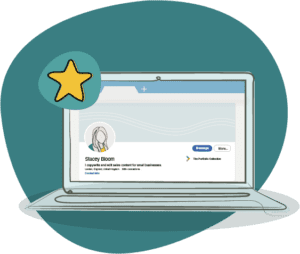Ben Legg
We all have different styles of working, and by extension, unique ways of landing clients. Some love the thrill of the chase, hunting down harder-to-land prospects just to prove they can convert a tricky lead. Others rely heavily on their network to make introductions and follow the web of potential customers that extend from there. Then there are the slow-and-steady types that ease into portfolio work and take calculated steps to ensure they’re not risking too much too fast.
In the end, a lot of your professional success comes down to confidence and knowing how to sell your passion, knowledge and skills. As your portfolio grows, you become more self-assured, but what about those early days when you’re still learning how to pitch and want to get things off the ground?

Even though we all have our own quirks and signatures we stamp on the work we do, there are a few tried-and-tested measures that have proven successful when it comes to securing work and building up a solid sales pipeline. Here are our top three tips to help you get started.
1. Be active in professional networking communities

We cannot stress enough how important having a strong network is. Whether you’re a freelancer or a focused expert, your reputation is built on the recommendation of others. A simple introduction or reference can put you leaps and bounds ahead of the competition when it really counts. So don’t be afraid to find a community and lean on them for support.
The Portfolio Collective community is a great place to start, especially if you want to meet other professionals going through the same journey as you. Plus you can take part in a whole host of industry-specific events, courses and masterclasses that will help you refine your brand identity and learn to effectively market your services.
You can also expand your professional network by engaging in:
- LinkedIn groups – This is a great way to find people who are working in your specific industry or niche. When you join a group on LinkedIn, you can widen your network by connecting with other group members. Just remember to follow the 80-20 rule when it comes to promoting yourself – 80% sharing content, 20% promoting your services.
- Virtual and in-person coworking – It’s now easier than ever to meet and connect with other portfolio professionals around the world through platforms like Freelance Folk, Othership and MyWorkHive. You can work with others virtually or find a real-life coworking space – it’s up to you! Either way, it’s a great tool for expanding your personal network.
- Online and in-person events – No matter what you’re into, there’s sure to be an association or collective out there filled with knowledgeable and enthusiastic professionals in your field. Meetup is a great place to go if you’re keen to find like-minded people and start engaging with them via events or virtual groups.
2. Optimise all your professional profiles
More than half the world’s population is on social media. LinkedIn alone has nearly 800 million users across 200 countries – that’s roughly 10% of all people on earth. So it’s no wonder these online communities and networks have become such a popular route for finding work.

According to HR magazine, 79% of millennials found their last position directly through social media. What’s even more astounding is that 91% of employers are now using social media to find and hire talent.
The best way to build a name for yourself is to ensure you have a strong presence across a range of different platforms. Don’t just join LinkedIn – create a robust profile that showcases everything you’ve achieved and actively engage in community conversations. The same can be said for our platform. The more you fine-tune your Portfolio Collective profile, the easier it will be for people to find you when they’re looking to hire someone for a project.
Did you know The Portfolio Collective has a talent match service? By simply creating and filling out your profile, you’re instantly eligible for a whole host of exciting opportunities with startups and scaleups.
When companies come to us looking for part-time and contract talent, we connect them with members who we think would be suited for the role. This technology, however, relies entirely on what you put into your profile. If you leave most sections blank, you won’t be found for the projects that are relevant to you. The same can be said for sites like LinkedIn and UpWork, which use the information you fill out on your profile to match you to suitable jobs based on keywords and experience.

If you want your profile to make an impression and help you land work, you need to:
- Showcase the best examples of your work. This is the first impression you’ll make, so ensure it’s a good one
- Choose your keywords carefully. To get found, you need to use the right keywords. Think about what words clients might use when they search for talent and make sure to embed those in your profiles.
- Share your values. A lot of people forget how important values are when it comes to building relationships with clients. If a customer has the same values, they’re more likely to remember you.
- Keep it professional. This is especially important for profile pictures. Remember, you’re putting yourself in front of potential employers, not just friends and family.
- Describe your professional experience holistically. If you have to sum up your work history, don’t just focus on the last job you had. Paint a bigger picture.
- Build up your connections. The more connected you are, the more trustworthy you become. Ask for recommendations and reviews from former colleagues and clients to display proudly on your profiles.
Top tip: Optimised profiles tend to show up on the first few pages of Google search results because they’re rich with keywords. So if you put the time in and really polish your profile, you’ve got another easy route for potential clients to find you.
3. Build a striking website

This may sound like a bit of a tall task if you’ve never built a website before, but it’s actually less complicated than you think. There are so many website building platforms out there with ready-to-use templates. You just need to plug in your branding and ensure it conveys you in the best way possible.
The most important part of developing your website is understanding your story. You don’t want to create something that’s forgettable and gets lost amongst the millions of others sites offering similar services. You want to build something unique to you and what you’re trying to achieve. Don’t be afraid to share your story.
Think of your website as an extension of your professional profile. It gives you the space to go more in-depth into the why that drives you and share all the intricate details of your offerings. Whereas your profile is more of a visual taste of what you can do, your website is the full picture.

It’s important to keep in mind Search Engine Optimisation (SEO) when writing web copy and designing your site. 53% of all website traffic comes from organic search. So if you want people to find you, you need to use the right keywords and make sure you’re articulating your mission, vision, and offerings in the clearest way possible. The best optimised sites are ones that read naturally and provide information in an easy to understand way.
Don’t be afraid to admit you’re still learning
There’s a certain level of bravery required to be successful in the portfolio landscape. Never doubt that you’re capable of amazing things. If you undersell yourself, you get lost. So figure out what makes you unique and start championing that across everything you do.
Of course, no one is expecting you to nail every aspect of your branding and marketing strategy the first time around. Even the most seasoned professionals can tell you horror stories about bad profiles and less-than-flashy website attempts.
So how is your Portfolio Collective profile looking? If it needs a bit of TLC, here are a few simple steps to help you get started.
Think this sounds like the right path for you? Come along to our monthly Community Welcome Call for new members to find out what a portfolio career could look like and how The Portfolio Collective can help you take those first steps towards professional success – and don’t forget to connect with our community!



